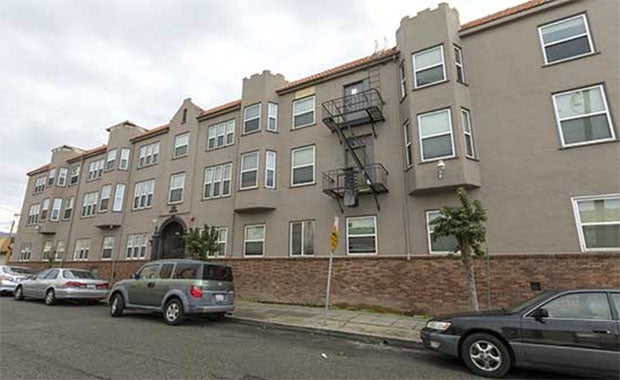

Health Systems Increase Investment in Affordable Housing Solutions

What’s New?
Kaiser Permanente last week unveiled three multimillion-dollar initiatives to create affordable housing for vulnerable populations in its service areas. The programs, which engage community and investment partners, are part of a larger strategy to improve the health of its most vulnerable population and reduce the costs of treating them.
The programs include:
- A joint-equity Housing for Health Fund with Enterprise Community Partners. The fund’s first investment: $5.2 million to upgrade and ensure that a 41-unit apartment complex in East Oakland, Calif., is preserved as affordable housing.
- A second fund of $100 million to offer loans to create and preserve multifamily-housing rental homes for low-income residents in Kaiser’s service areas.
- Working with a community partner, the city of Oakland and Alameda County to secure housing and other vital services for 500 vulnerable individuals in the city.
All these efforts come on the heels of a $200 million Thriving Communities Fund that Kaiser Permanente established last May.
What’s Going On?
During the last several years, a growing number of health systems and hospitals have started innovative programs to address the needs of those with unstable housing situations, whose life expectancy is 27.3 years less than those with stable housing, notes Jay Bhatt, D.O., the American Hospital Association’s senior vice president and chief medical officer.
A report in Fast Company magazine cites several recent housing initiatives undertaken by health care organizations, including a $30 million campaign by Sutter Health in Northern California to end homelessness in three Sacramento-area counties. In Columbus, Ohio, Nationwide Children’s Hospital partnered with United Way, the city of Columbus and others to invest in renovating dilapidated housing in the area and building new, affordable housing.
Bhatt says the steady move toward value-based care, affordability, and the growing body of evidence that shows the impact of housing on health are all factors in prompting providers to take a more active role in addressing the needs of those in unstable housing situations. It’s also becoming an economic imperative given the high costs of care for those who are homeless or in unstable housing situations.
An AHA case study published in March illustrates the point. It explores how the University of Illinois Hospital & Health Sciences System in Chicago and the Center for Housing and Health partnered on a program that started in 2015 to provide 25 to 27 chronically homeless people with stable housing and support services. Results showed a 67 percent reduction in participants’ health care costs (excluding one outlier: a patient receiving end-of-life care) and a 35 percent reduction in emergency department use.
“Health systems are getting better at engaging with community partners,” Bhatt says, adding that these efforts ultimately bring savings to health care providers and partners in various areas of the community. The AHA and the Institute for Diversity and Health Equity are focusing on the housing issue and other social determinants of health in a new national pilot program that pairs hospitals with partners to address health inequities. The Hospital Community Cooperative is dedicated to closing gaps in health equity.
3 Tools to Explore
As hospital executives continue to explore ways to lead and partner in addressing the health impacts of housing instability, there are three valuable resources to help them set strategy, program development and partnerships:
- Housing and the Role of Hospitals: This AHA guide: explores the diverse responses hospitals and health systems can take to address housing issues in their communities and provides five case studies examining innovative programs organizations have undertaken.
- Working to End Homelessness: This AHA case study examines Yale New Haven Hospital’s medical respite program, which provides recuperative care to those who are homeless and exiting the hospital. The program has reduced public health costs by reducing unnecessary readmissions.
- Housing Is Health Care: This report discusses several of the University of Vermont Medical Center’s successful community collaboration housing initiatives.



